Estimated reading time: 9 minutes
The Italian prosciutto is famous all over the world, and is a favorite in the United States. It’s a staple in the charcuterie board, and prosciutto from the Parma region is the best of the best!
I loved it so much that I scheduled a visit to the prosciutto factory. I’m here to tell the tale after my visit to a Parma Ham factory in the food valley of Italy! 😋
Prosciuttoficio are the factories producing Parma Ham, or as Italians call them: Prosciutto.
An absolute favorite for foodies and cheeseboard enthusiasts around the world, a whopping 7.8 million Parma Hams in 2022 made way onto their plates!
Table of contents
What is Prosciutto? 🐽
First things first, prosciutto is NOT pancetta. They are different things, though both are delicious for sure! Pancetta is cured pork belly, while Prosciutto is cured leg of pork.
The whole leg need to be cured for 1 year or more to develop a sweet, intensely savory taste. With a supple texture and distinct aroma, the Prosciutto di Parma is a world-renowned ham that is only made in a specific region in Italy.
It is a popular topping for sandwiches, pizzas, and charcuterie boards. Salty yet rich in flavor, it is no wonder that they made 1.6 million euros in revenue!
Where is Prosciutto From?
The city of Parma produces the king of ham: Prosciutto di Parma! It similar to the Parmigiano Reggiano cheese, is a PDO (Protected Designation of Origin) regulated product.
It is produced only in specific areas in the Province of Parma and is tightly controlled by the Consortium.
The pork they process has to be born, bred, and slaughtered in certain Italian regions, defined by the law.
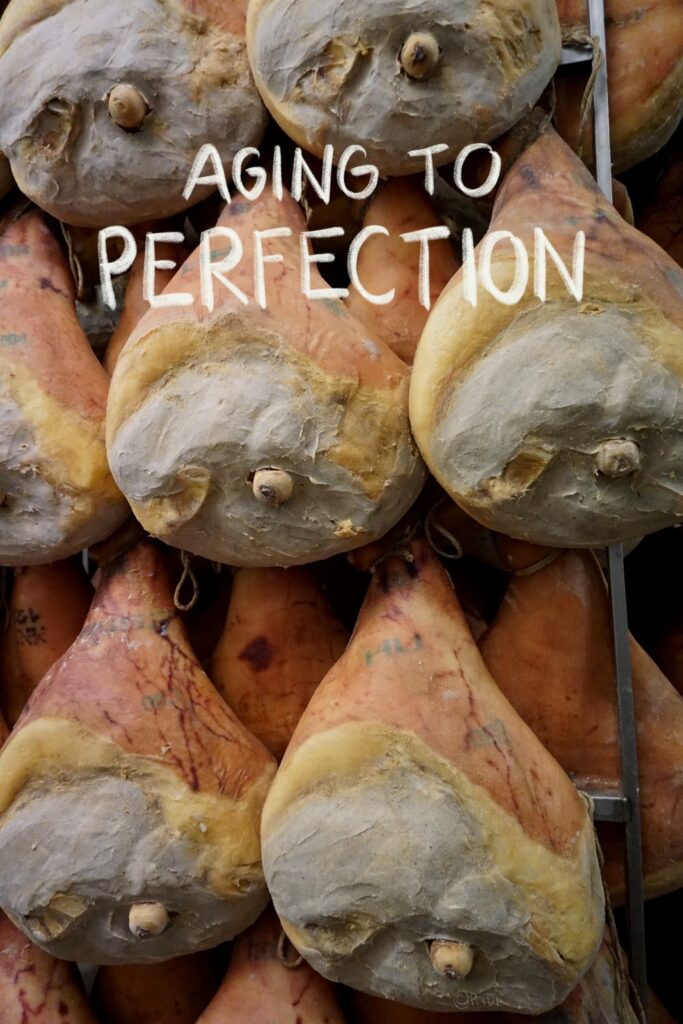
The DOP Consortium 👑
The Consortium only licenses 134 producers of prosciutto di Parma, and the Consortium is responsible in regulating each one of these production companies.
They do Quality Control for every single leg of ham; isn’t that wild?!
I will show you the unique way they do it later (it is a very… rustic instrument for sure 😅).
Some of the rules they created has to do with geographical restrictions, weight, processing steps, moisture content, color, ingredient, curing time, and even pig feed!
Only 2 ingredients are allowed in real Parma Ham: pork leg and salt. 🐖
Every 100g of prosciutto contains 26% of protein, and it lasts for an unlimited time (forever!) with the bone intact at 14-18 C (57-64 F)!
Now, How is Prosciutto Made? 🐷
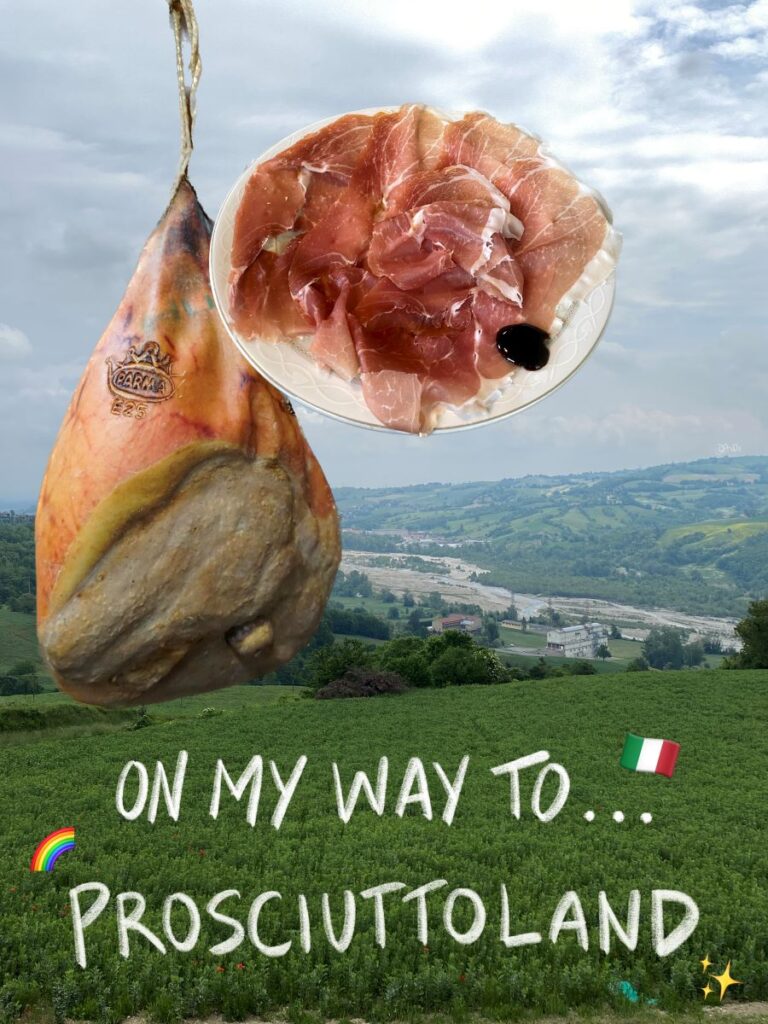
My tour started in the morning from the city of Parma, Italy. We visited a parmesan cheese (Parmiggiano Reggiano) factory first before heading off to a prosciuttoficio right after!
Our guide drove us to a higher elevation to get to the factory. Historically, these chosen regions had to be cold and windy to preserve prosciutto perfectly.
Next, we had to gown up and wear a hair net to enter the facility.
The First Stage: Salting 🧂
First Salting
The first step to the production is to select the most high-quality pork legs.
The only pigs they accept are those older than 9 months with an average weight of 160 kilograms! The salt master will then salt these pork legs to begin the preservation process.
After 5 days in the environmentally-controlled room, the salt will pull away some of the moisture from the meat and the color of the muscles will became darker.
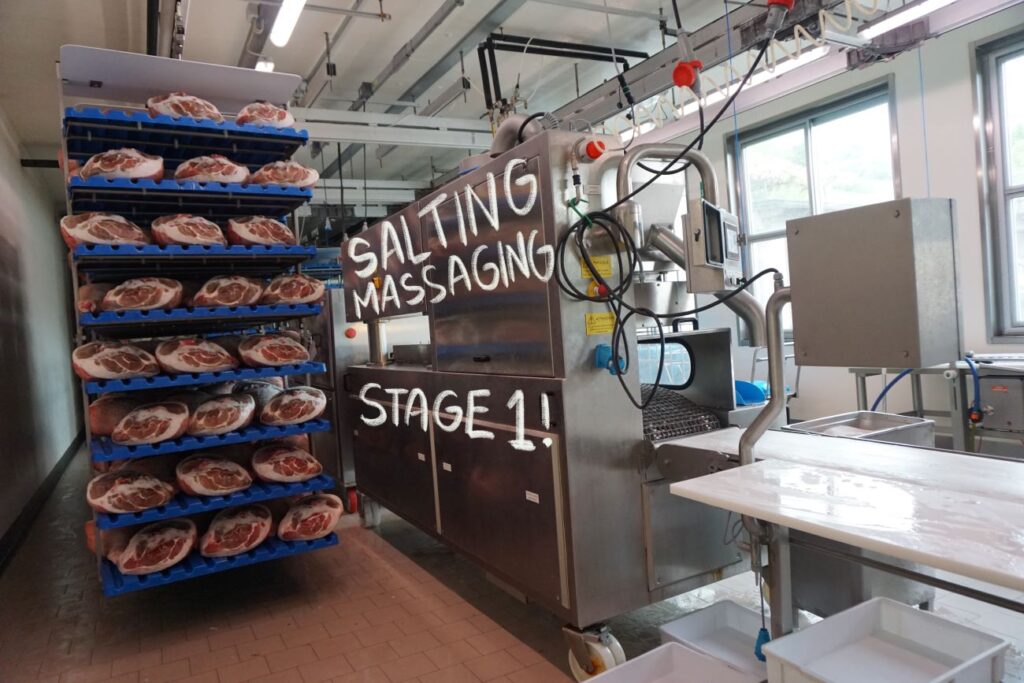
Washing and Massaging
Then, they used a specialized machine to blow excess salt away and massage to “open” the muscle fibers.
Second Salting
In a second salting process, the salt master (maestro salatore) expertly determines where and if enough salt were added🧂.
The additional aging process takes 15 more days. These high-quality pork legs will then chill in an environmentally-controlled room, where the temperature and humidity level are strictly controlled.
What would follow in the next step is the second salt removal and massage sessions. Peep these large windows where pure sea salt will transform the hind legs of pigs!
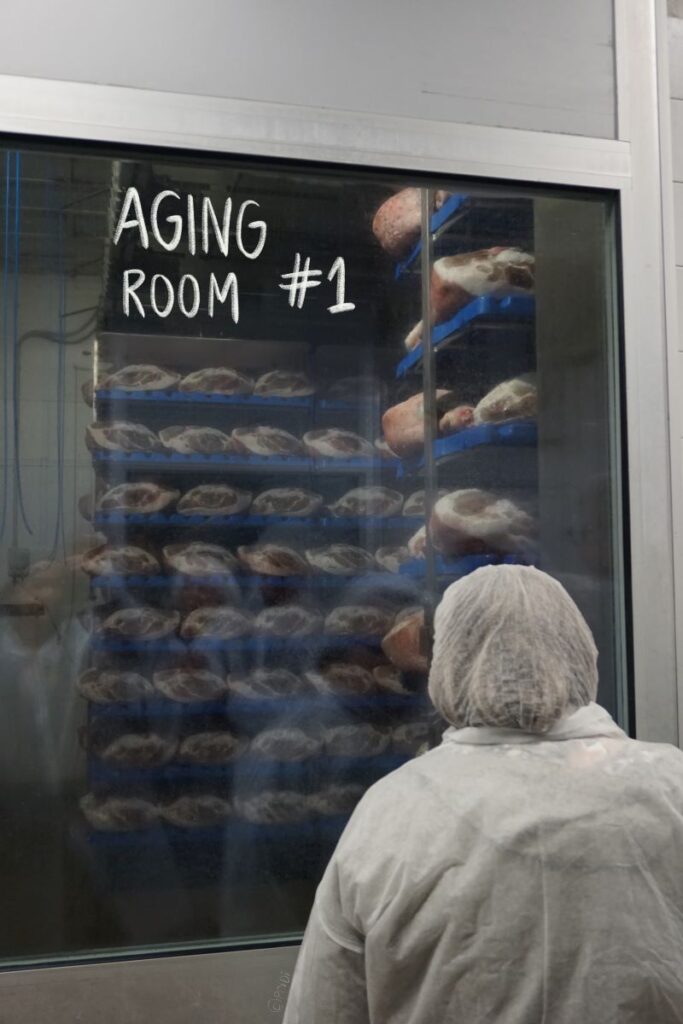
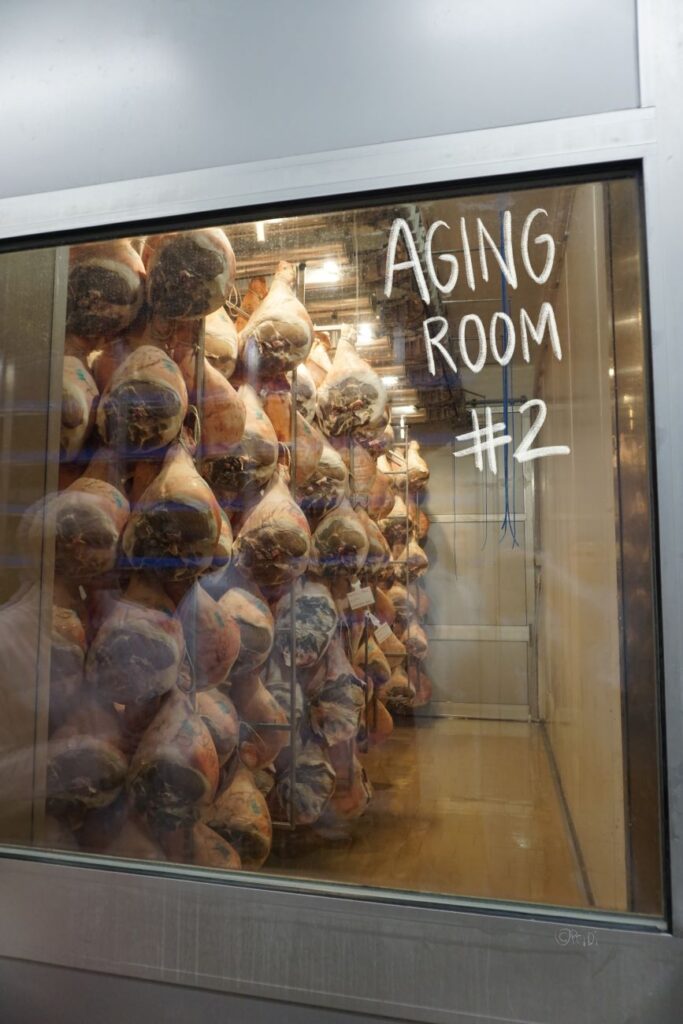
Once done with the second salting process, the workers will insert a string to be able to hang up these curing hams in the drying room.
The lengthy process continues with another 20 days of aging! This first stage is a very slow 3-4 month process in total that requires a lot of patience to bring out the meat’s qualities.
The Second Stage: Long, Long Aging 😱
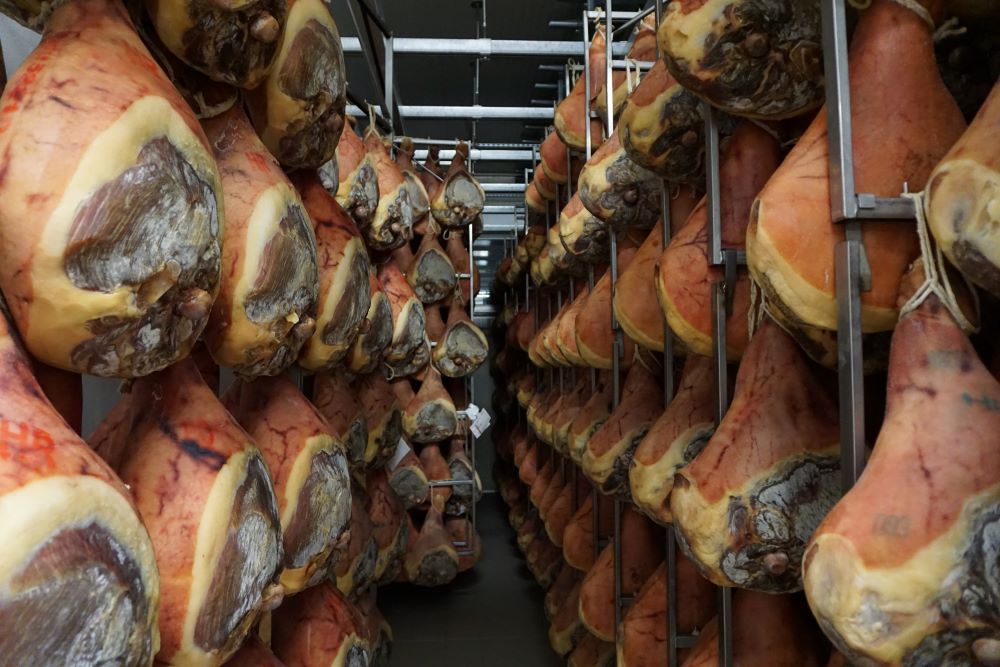
In order to emulate winter conditions from the olden days, traditional prosciutto needs to be cured in a dry place.
In the second stage, the hams went through aging in another environmentally-controlled room.
Lard Layering and Final Curing
After the first 3 months, the producer will scrape the yeast off of the surface. They will then cover them with a mixture of rendered pork fat, rice flour, salt, pepper, and water to lessen moisture loss.
With the gradual drying of the hams, they will smell sweet and almost fruity. After 12-13 months of aging, the prosciutto hams are finally ready to be inspected by the Consortium.
Curious about what they use to examine each leg? I really could not have guessed it on my own.
Prosciutto Inspection: Checking Out the Legs 🔍👀
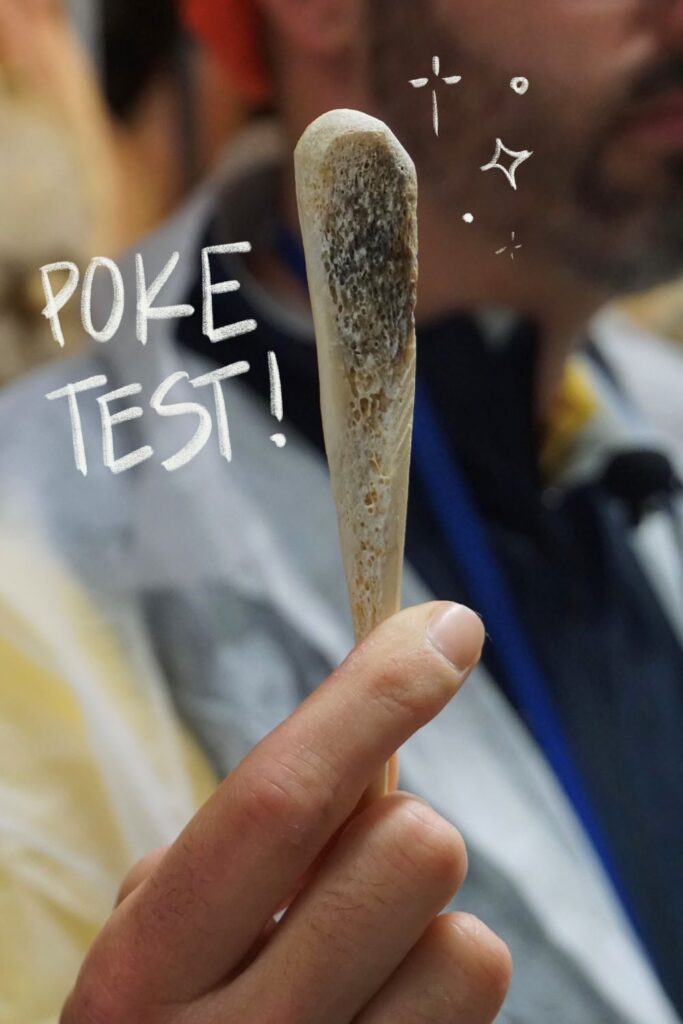
They use a special pick made out of horse bone! The tibia, to be exact. These inspectors will poke around the fat or hip bone with the horse bone needle, then they would smell them.
Just by the smell, the inspectors are able to distinguish good hams from bad ones!
Can you imagine, laboring and waiting for a whole year to have it thrown away? But it is very important to keep up with food safety standards and avoid contamination!

Once it is approved, the dry-curing process is officially done. At the end of this phase, these hams can now be classified as Parma Ham.
The inspector would fire-brand the leg with the official stamp: the ducal crown shaped stamp adorned with the word PARMA.
The stamp declares that this, ladies and gentlemen, is officially a Prosciutto di Parma!
Tasting Time!
If you can believe it, the best Parma Hams take even longer to cure. Good things take time, right?
My guide told me that they are at their best after 24-30 months of aging. To prove it, our guides took us to a restaurant attached to the factory to taste the hams.
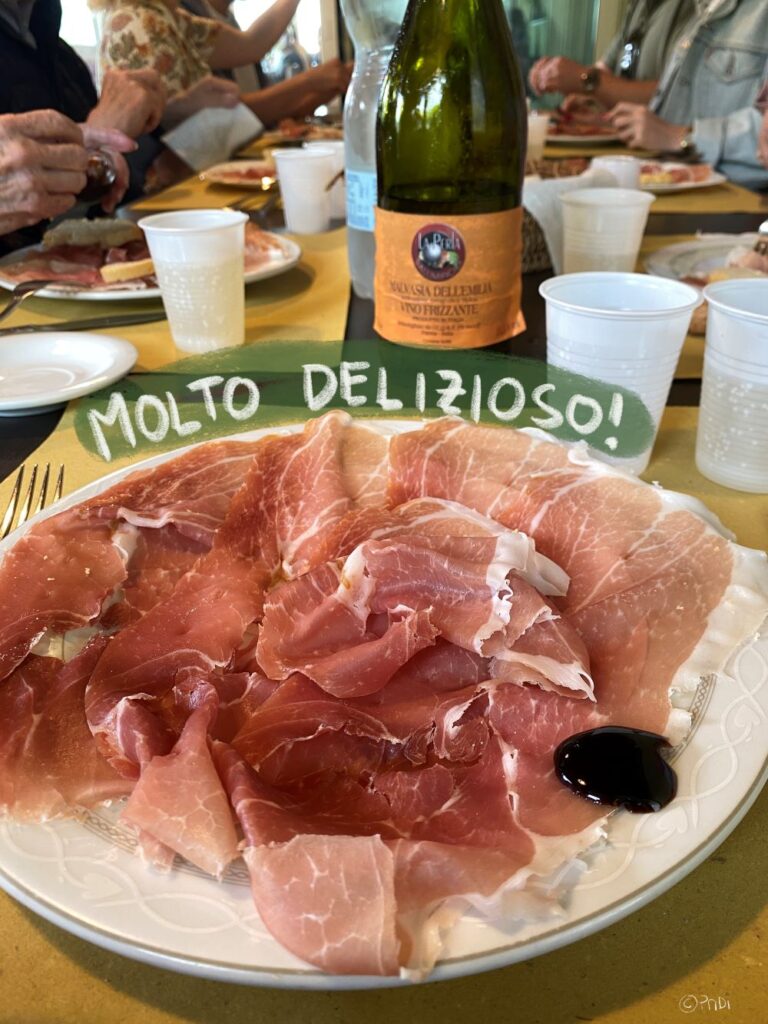
These were so so delicious! It’s hard to believe that such simple ingredients such as pork and salt can produce this complexity.
They also served us some balsamic vinegar for some acidity and some red wine for general wellness (😂). The thin slices of prosciutto had the perfect combination of savory and salty flavors.
I also tasted that classic yeasty cured meat taste that whets the appetite. Each mouthful was a wonderful mélange of meat and fat.
I could not help but buy some to take back with me!
What Should I Eat Prosciutto With?
Although perfect on its own, there are several popular ways to eat Prosciutto. Some popular combinations and recipes are:
1. Prosciutto with cheese and honey: A popular addition to cheeseboards, prosciutto with cheese are the perfect combination!
Hard cheese such as Parmiggiano Reggiano and soft cheeses like burrata both complement the distinctive flavor of Prosciutto. Add honey for a touch of sweetness, and you’ve got the best bite.
2. Prosciutto with melon: The sweet, juicy melon slices balances out the salinity of Parma Ham. Wrap thin slices of the ham around a slice of melon and top with some balsamic reduction.
Salty, sweet, and juicy all in one bite!
3. Prosciutto with asparagus: A popular appetizer as well, wrap a prosciutto slice around asparagus and roast them. Gratings of parmesan would be the cherry on top for this combo.
4. Prosciutto with figs: Sweet-and-salty never gets old! Salty Prosciutto, juicy figs, and some balsamic vinegar would be the perfect appetizer for your Italian feast.
5. On sandwiches and pizzas: A popular addition to sandwiches and pizzas, Prosciutto is usually added sans cooking. Creamy cheese, crispy crusty bread, and prosciutto is a classic combo.
6. On salads: Prosciutto on a bed of arugula is a popular combination for a reason. The peppery arugula is a great companion for salty Prosciutto and creamy cheeses such as burrata.
Enjoy with a drizzle of balsamic vinaigrette, juicy pears, and a sprinkle of crunchy walnuts for the best texture and taste.
Hope you enjoyed this tour into a Prosciutto factory! Leave a comment if you want to know more about my experience.
P.S. = If you are looking for things to do in Italy, read about my tour into the Parmesan cheese factory and my guide to 12 best things to do in Florence!

Pin It!
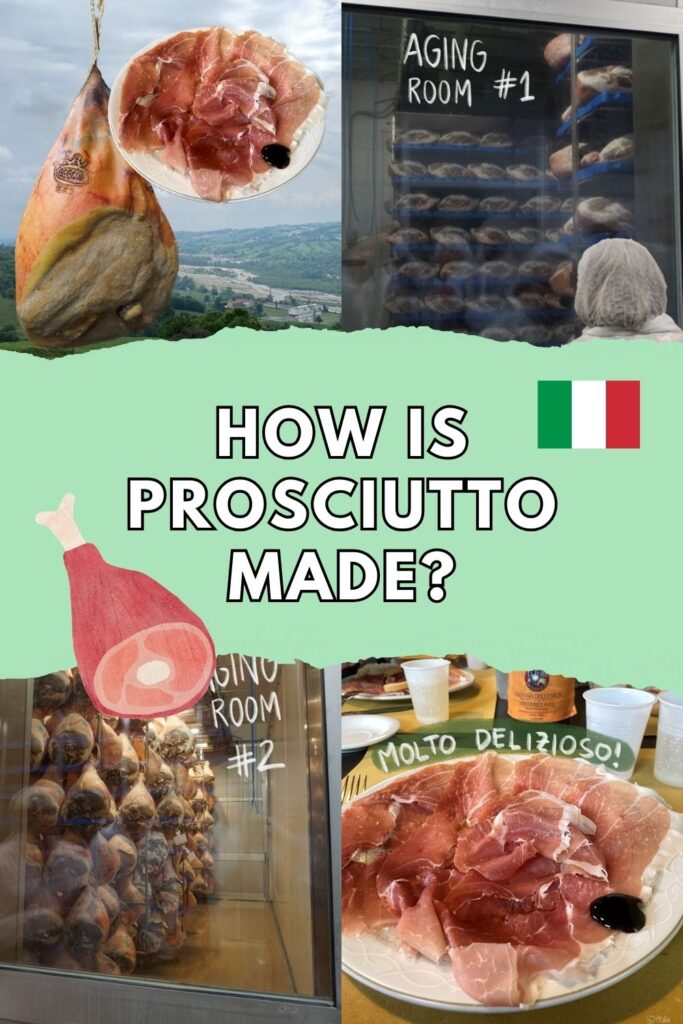

One thought on “Prosciutto Perfection: The Skill Behind its Creation”